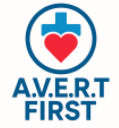
Step 1: Vulnerability
Definition:
Vulnerability represents the baseline state of increased susceptibility to harm. It does not cause harm by itself but creates conditions where risks, stressors, or hazards are more likely to affect an individual, group, or system. Vulnerabilities may be physical, psychological, social, environmental, or systemic.
Relationship to Pathway of Harm:
Vulnerability is the starting point in the pathway of harm. It interacts with subsequent factors such as risk and exposure. The stronger or more numerous the vulnerabilities, the higher the likelihood that a given risk can result in actual harm. In A.V.E.R.T., identifying vulnerability is essential because it guides where attention and protective actions should focus before a crisis occurs.
Types of Vulnerability (Examples):
-
Individual: Age (elderly, infants), chronic illness, developmental disability, mental health challenges.
-
Social/Environmental: Poverty, housing insecurity, social isolation, community violence.
-
Systemic/Structural: Discrimination, inequitable policies, gaps in healthcare or social services.
-
Situational: Temporary stressors like sudden job loss, natural disasters, or acute family conflict.
Statistics / Evidence:
-
Social determinants of health contribute to up to 40% of preventable health outcomes in the U.S.
-
Older adults with multiple vulnerabilities (e.g., frailty, social isolation) have a 3–5x higher risk of preventable injury.
-
Youth living in under-resourced neighborhoods are 2–3x more likely to experience violence or substance exposure.
How We Assess / Observe Vulnerability:
While A.V.E.R.T. has proprietary scales, the key teaching is:
-
Look for patterns or clusters of risk factors that increase susceptibility.
-
Observe baseline functioning in physical, emotional, social, and systemic domains.
-
Consider contextual history, prior events, and environmental cues.
-
Train staff and community members to identify subtle signals that indicate someone may be predisposed to harm before exposure occurs.
Relationship to Later Steps:
-
Vulnerability alone does not create harm but amplifies the impact of risk and exposure.
-
Early recognition allows interventions before a trigger or crisis emerges, improving outcomes and reducing escalation.
Illustrative Examples:
-
An elderly person living alone with mobility issues and no nearby family support is highly vulnerable to falls, medication errors, or neglect.
-
A teenager experiencing social isolation, prior bullying, and inconsistent adult supervision is vulnerable to online exploitation or substance use.
-
A community with high unemployment and limited healthcare access is structurally vulnerable to chronic illness crises and social harms.
Takeaway / Summary:
“Vulnerability is the baseline condition that shapes how we experience risk. By understanding and observing vulnerabilities, A.V.E.R.T. equips people to notice early signs and take preventive steps before harm occurs.”







